





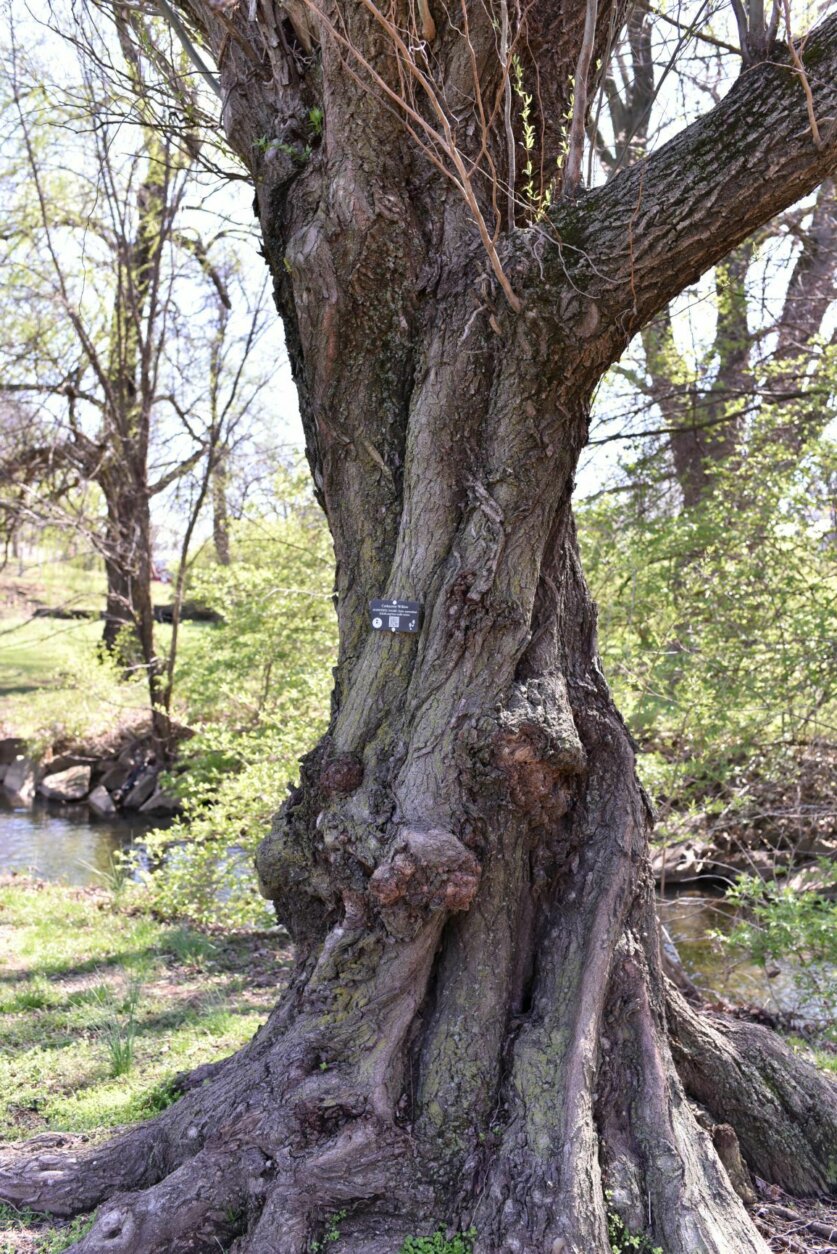

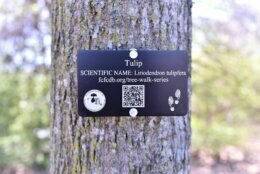
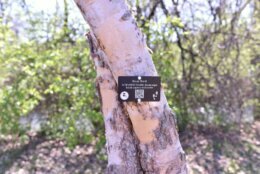
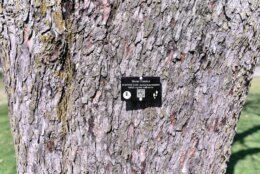
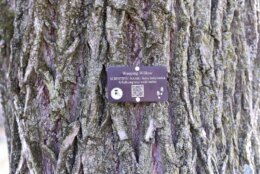


Take a walk with the trees
Feeling a little “squirrely?” Then do what those Long-Tailed Servants of Satan do and take to the trees! Specifically, the trees in Baker Park in Frederick County, Maryland. The Frederick Forestry Board has created a “tree walk” by placing placards on thirty different varieties of trees, identifying them by name and noting some of their more interesting characteristics.
Curated by Bethany Dell’Agnello, a retired teacher, the tree walk is the perfect antidote to these trying times. It gets you out in nature where you can proceed at your own pace, practicing social distancing, of course.
Best of all, there’s no group leader to keep up with, in fact, there’s no group at all, just you and the trees; “and if you’re not careful, you’ll learn something.”
Tree test time
Can you tell a beech tree from an oak?
Would you know a weeping pendulous Katsura tree if you saw one? Or, would you know that in Asian mythology, this magnificent looking tree is connected to the appearance of the Man on the Moon?
Did you know that the so-called tulip poplar isn’t a poplar of any kind, but a close relative of magnolias? It’s also not a tulip — but you knew that.
Or that the county champion English Elm — believed to be two hundred years old — is located on a local high school campus?
These are just a few of the thirty trees that are identified and explained on the “tree walk” section of the Frederick Forestry Board website — complete with the exact coordinates defining their location, so you take an actual tour as well as a virtual one!
Herons and chewing gum, too!
Looking for a safe place to wander in Nature? Need an interesting subject for your homebound child’s schooling? The “Tree Walk” includes white pines by Culler Lake, where you can try to find the white-crowned night herons that nest there every Spring. While there, you can learn that the sweet gum tree got its name because native Americans used its sap as chewing gum.
And you may be surprised to find a majestic gingko tree — a “living fossil” that dates back hundreds of millions of years — in the yard of a home. It was planted there long before Baker Park was created.
Mosquito prevention time!
Just got an email from “Noah” at an undisclosed location, asking about BTI traps. Perfect timing, Noah!
Everyone knows that mosquitoes breed in standing water, and the advice for years has been to clean out your gutters — their biggest unseen breeding ground — and empty all the standing water on your property. But there’s a better way.
Instead of dumping water, fill up buckets, cat food cans, take-out containers and such and then treat the water with BTI — a naturally occurring soil organism that prevents mosquito eggs from progressing into biting adults without harming anything else. Birds can drink the water, your dog can drink the water, and it only affects mosquitoes.
You’ll find BTI in the form of little doughnut-shaped dunks and granules at any hardware, home store or garden center.
Trap those bloodsuckers!
A warm, wet winter means more mosquito misery for us, but there is a way to fight back.
First, clean out your gutters, as they are the biggest unseen source of mosquito breeding.
Second, get thee to a hardware, home store or garden center and buy BTI.
As mentioned above, BTI is a naturally occurring soil organism that prevents mosquito eggs from developing into biting adults — and now is the time to place BTI “traps” all around your house, as female mosquitoes are just now emerging from hibernation and looking for standing water nearby in which to lay their eggs.
If that water is laced with BTI, you defeat that all-important first generation, and get the math to work in your favor for a change. BTI is safe for everything except mosquitoes, and comes in two forms — small donut shaped dunks designed for large areas of water (like ponds) that are effective for a month; and granules in shaker jugs that are more powerful, but only last a week or two.
Feel free to bust up the big ones with a hammer and place a chunk in things like a five-gallon bucket. Shake the granules into wet areas of your property. This will allow frogs, toads and lightning bugs to breed, but no skeeters!
For more info, visit the Summit Chemical Company.
Mike McGrath was Editor-in-Chief of ORGANIC GARDENING magazine from 1990 through 1997. He has been the host of the nationally syndicated Public Radio show “You Bet Your Garden” since 1998 and Garden Editor for WTOP since 1999. Send him your garden or pest control questions at MikeMcG@PTD.net.







